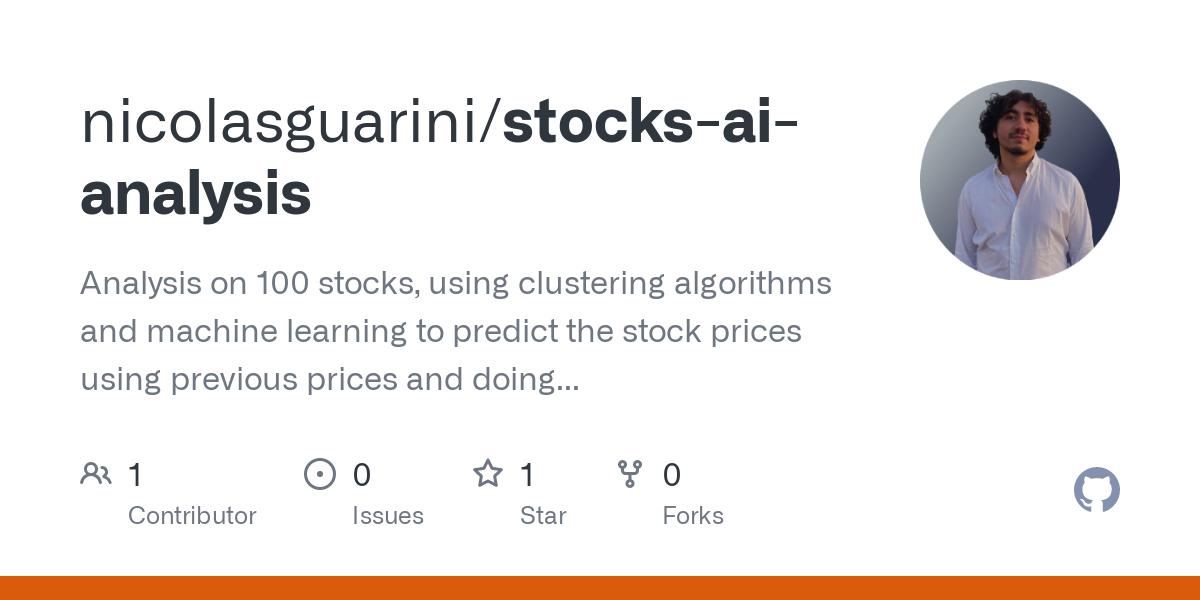20 Great Pieces Of Advice For Deciding On Ai Stock Market Websites
20 Great Pieces Of Advice For Deciding On Ai Stock Market Websites
Blog Article
Top 10 Tips For Assessing Market Coverage Using Ai Stock Predicting/Analyzing Trading Platforms
Market coverage is an important element to take into consideration when evaluating AI stock predicting/analyzing trading platforms which determines the depth and breadth of markets and assets which you have access to. Platforms that have a wide market coverage permit you to diversify your options and discover global opportunities as well as adapt to different trading strategies. These are the top 10 tips to assess the market coverage of these platforms:
1. Evaluate Supported Asset Classes
Stocks - Ensure you have access to major stock exchanges such as NYSE and NASDAQ. Also, ensure that your platform offers small-caps and mid-caps.
ETFs: Verify that the platform provides a variety of ETFs to give you a variety of exposure to different categories, themes and countries.
Options and futures. Find out whether your platform provides derivatives, such as options, futures or any other leveraged instrument.
The commodities and forex market: Check whether the platform offers the forex pair and precious metals, energy commodities, as well as agricultural commodities.
Cryptocurrencies: Make sure the platform supports major copyright (e.g., Bitcoin, Ethereum) and altcoins.
2. Check coverage of your area
Global markets: Make sure that the platform is inclusive of major global markets such as North America, Europe and Asia-Pacific.
Focus on regional markets: Find out if a platform focuses on regions or specific markets that are aligned to your business goals.
Local exchanges - Examine to see if there are local or regional exchanges available that relate to your location and your strategy.
3. Comparing Real-Time Data to Delayed Data Delayed Data
Real-time data - Ensure that your platform is able to provide live market data that can aid you in making quick choices, especially for active traders.
Delayed data - Check whether delayed data is available for free or is available at a reduced cost. This could be enough to investors who want to invest for the long-term.
Data latency. Examine whether the platform reduces the delay for feeds of information that are real-time particularly for high-frequency trading.
4. Evaluation of Historical Data
Depth of historical data Make sure the platform provides extensive historical data (e.g. 10, more than 10 years) for backtesting and analysis.
Check the level of detail in the historical data.
Corporate actions: Make sure that the historical information includes dividends and splits of stock.
5. Verify the Order Book and Market Depth Data
Data Level 2: Ensure the platform has Level 2 (order book depth), for better price discovery.
Verify the bid-ask ranges in order to confirm the accuracy of pricing.
Volume data: Make sure that the platform provides comprehensive volume data to evaluate market liquidity.
6. Review the coverage for Indices and Sectors
Major indices - Make sure your platform is compatible with major indices, like the S&P 500 (e.g. NASDAQ 100 or FTSE 100), for benchmarking based on indexes.
Data specific to a sector to provide targeted analysis, look into whether the platform provides data on a particular industry (e.g. technology, healthcare, or energy).
Custom indices. Check if the platform supports creating and tracking custom indices according to your criteria.
7. Evaluation of integration with News and Sentiment data
News feeds: Ensure that the platform integrates real-time news feeds that come from reliable sources (e.g., Bloomberg, Reuters) to track market-moving events.
Sentiment analysis Check to determine whether your platform supports sentiment analysis tools that utilize information from social media, news sources, or any other data source.
Events-driven Strategies: Determine if the platform supports strategies that are triggered by certain events (e.g. economic reports and earnings announcements).
8. Verify Multi-Market Trading Capability
Cross-market trading : Make sure the platform supports trading on different asset classes, markets and exchanges from an interface that is single.
Conversion of currency: Make sure your platform allows multi-currency trading and automatic currency conversion.
Make sure you have support for time zones.
9. Evaluation of alternative data sources
Alternative data - Check for alternative data sources that are integrated into the platform (e.g. web traffic, satellite imagery, or transactions with credit cards). This can give you unique information.
ESG data: Check whether the platform has environmental, social, and governance (ESG) information to support socially responsible investment.
Macroeconomic Data: Ensure that the platform has macroeconomic indicators, such as GDP, inflation and interest rates.
Review Market Reputation and User Recommendations
User reviews: Examine user feedback in order to evaluate the platform's market coverage as well as its reliability and usability.
Industry reputation: Check if the platform is recognized as a market leader by experts in the industry or awards.
Look for testimonials that demonstrate the effectiveness of the platform in particular markets and asset classes.
Bonus Tips
Free trial period: Test the market coverage of the platform and its data quality with the demo or trial for free.
API access Make sure to check if the API of the platform permits an analysis that is custom made using market data.
Customer support: Make sure the platform can help with any market-related queries or data-related issues.
By using these tips using these tips, you will be able to be able to accurately evaluate the coverage of AI software for stock prediction and analyzing trading platforms. It is then possible to select an investment platform that provides you the markets and the necessary information to be successful in your trades. Market coverage is essential for diversifying portfolios, identifying new opportunities, and adjust to changing market conditions. Check out the most popular get redirected here about incite for blog tips including ai stocks to invest in, free ai trading bot, ai stock trading, investment ai, ai trading, ai stock trading, best ai stock trading bot free, trader ai intal, ai stock trading bot free, best ai etf and more.
Top 10 Tips On Looking At The Scalability Ai Trading Platforms
It is crucial to evaluate the performance and scalability of AI-driven trading and stock forecasting platforms. This will guarantee that they are able to handle growing data volumes as well as market complexity and demands from users. Here are 10 top strategies for evaluating scaling.
1. Evaluate Data Handling Capacity
Tip: Verify that the platform is able to process and analyse large data sets.
Why? Scalable platforms have to handle increasing data volumes without compromising performance.
2. Test Real Time Processing Capabilities
Test the platform to see how it handles data streams in real time for example, breaking news or stock price updates.
The reason: Inconsistent trading decisions could lead to missed opportunities.
3. Check Cloud Infrastructure for Elasticity
Tip. Determine whether the platform utilizes cloud-based infrastructure such as AWS, Google Cloud and Azure, which can scale resources on demand.
Why? Cloud platforms are elastic and are able to be scaled up and down according to demands.
4. Algorithm Efficiency
Tips: Find out the effectiveness of AI models used to make predictions (e.g. Deep Learning or Reinforcement learning).
Reason: Complex algorithms are resource-intensive. So optimizing them will aid in scaling.
5. Examine Distributed and Parallel Computing
Check to see if your system is running the concept of distributed computing or parallel processing (e.g. Apache Spark, Hadoop).
Why: These technologies allow faster data processing and analytics across multiple nodes.
6. Review API Integration and Interoperability
Check the platform's capability to incorporate APIs from other sources.
Why: The platform is able to adapt to changing markets and sources of data due to the seamless integration.
7. Analyze User Load Handling
Tip: Simulate high user traffic to test how the platform does under stress.
What's the reason? A platform that is scalable has to maintain its performance as the number of users increases.
8. Examine the model's retraining capabilities and adaptability
Tips Check how often the AI models can be trained on new data.
The reason is that models must continuously adapt to the changing market to ensure that they remain precise.
9. Examine for fault tolerance and Redundancy
TIP: Ensure that the platform has failover mechanism and redundancy in case of hardware or software issues.
Why: Downtime is costly for trading. So fault tolerance is crucial to the scalability.
10. Monitor Cost Efficiency
Review the costs associated with your platform that includes cloud's storage, cloud resources and computation power.
What is the reason: The expense of scalability should not be unsustainable. Therefore, it is crucial to find a balance between performance and cost.
Bonus Tip: Future-proofing
Platforms should be designed to incorporate new technologies like quantum computing as well as advanced NLP. They must also adjust to regulatory changes.
By focusing your attention on these aspects and focusing on these factors, you can evaluate the capacity of AI prediction as well as trading platforms. This guarantees that they are robust and efficient as well as ready for further growth. Check out the top rated website about trade ai for more tips including investing ai, ai trading software, ai stock, trader ai review, ai stocks to invest in, copyright financial advisor, canadian ai stocks, canadian ai stocks, incite, ai for stock trading and more.